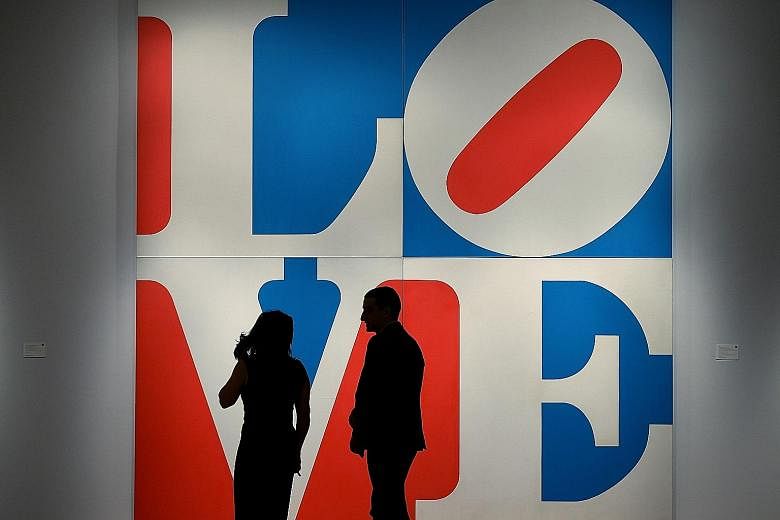BOSTON • It is not rest in peace, for now, for Love sculptor Robert Indiana who died on May 19.
A foundation charges that the man named in Indiana's will to run his estate is not fit for the job.
Indiana, who in his final years was the subject of a struggle over who represented him and controlled his work, left behind an estate worth an estimated US$28 million (S$37.7 million), according to a court filing.
His will, filed last Friday in Knox County Probate Court, leaves most of his art and property to a non-profit organisation whose mission is to develop Indiana's home into a museum featuring his works.
The will said the entity was to be run by Mr Jamie Thomas, Indiana's caretaker in his final years.
The day before Indiana died at age 89 at his home in Maine, Morgan Art Foundation, a company that said it had long held the rights to several of his best-known works, filed a federal lawsuit.
It alleges that Mr Thomas and a New York art publisher had isolated Indiana from the world and produced unauthorised or adulterated versions of his art.
Mr Luke Nikas, a lawyer representing the plaintiffs, expressed concerns over Mr Thomas' appointment to lead the non-profit group at a time when the company is battling in court over who controls the rights to some of Indiana's often reproduced work.
"We will fight to protect Indiana's legacy and will be vigorously challenging this appointment with the Maine attorney-general and in court," Mr Nikas said.
Indiana's lawyer James Brannan, who is named as executor of the will, said Morgan had owed the artist royalties and that Mr Thomas had been simply carrying out Indiana's wishes for privacy.
"It got to the point that everybody who wanted access wanted something in return," Mr Brannan said. "He was a very private individual and he did not handle that well."
Indiana's will directed that his former residence, known as the Star Of Hope, would serve as a museum, run by the non-profit Star Of Hope Foundation.
The building and the art Indiana kept there are notable, said Mr Michael Komanecky, chief curator of the Farnsworth Art Museum.
"To me, it's one of the most remarkable artist environments in the United States because of this combination of Bob's work and how he has presented it in this highly decorated interior (of the house) that served a fraternal order in the 19th century," he noted.
The distinctive building is now mouldering, however, with rotten clapboards, boarded-up windows and a blue tarp on the roof.
The will did not contain a detailed list of assets that Indiana, who had no immediate family as survivors, left behind. But Mr Brannan said the bulk of the estate was artwork.
In addition to the Star of Hope, the will notes several other properties, including a former sail loft in the harbour that Indiana used as a studio.
The properties are worth US$1.5 million to US$2 million.
NYTIMES

